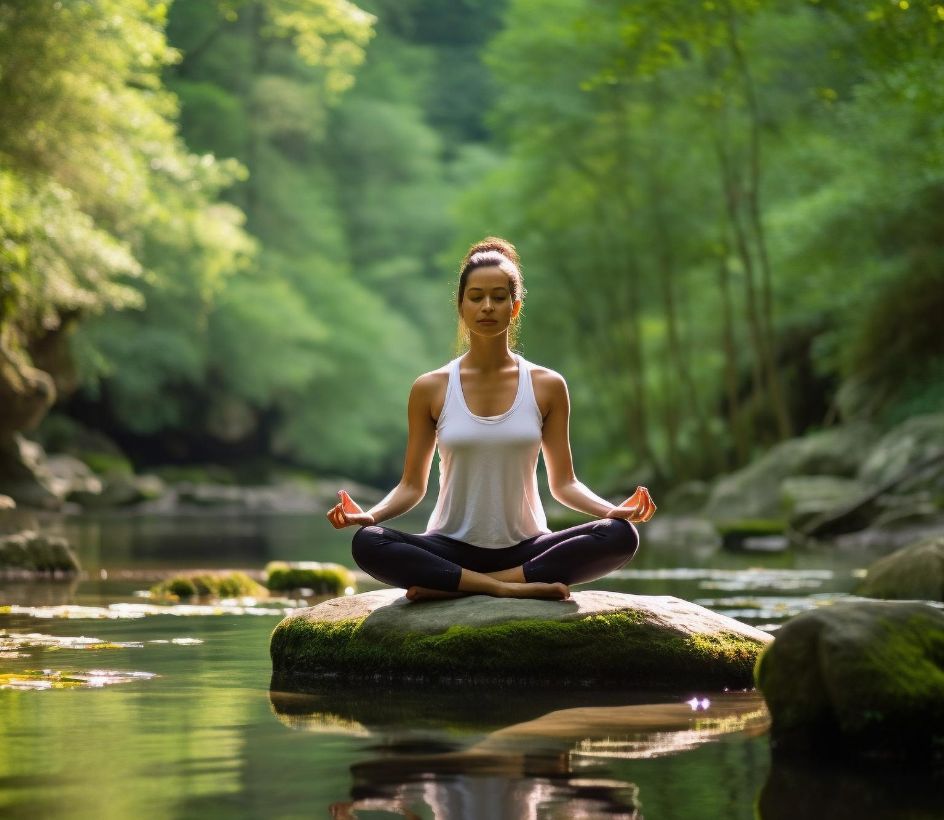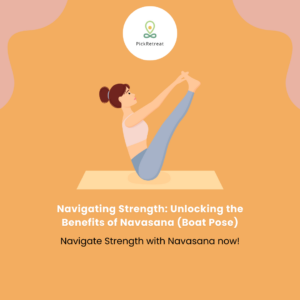Table of Contents
Introduction
Yoga has become increasingly popular in recent years, thanks to its countless benefits that range from improving flexibility to promoting mindfulness. Nevertheless, for those who are new to yoga, starting out can seem intimidating at first. That’s where we come in! Our article offers a gentle introduction to yoga for beginners. We’ll cover everything from simple poses that are perfect for beginners to an overview of Patanjali Yoga Sutra. We will also cover the tips on how to stay consistent with your practice. Additionally, you’ll discover many physical and mental benefits associated with practicing yoga if you read on and learn how to start your journey today!
What is Yoga?
Yoga, an ancient practice originated in India over 5,000 years ago. It has become a popular physical, mental and spiritual discipline worldwide. Its essence lies in achieving the balance between the body, mind and spirit by finding harmony within oneself.
Yoga comprises various postures known as asanas that aim to enhance flexibility, strength and balance. However, yoga holds significance beyond physical exercise. It is a way to awaken the latent potential of your subconscious mind by connecting with your mental space, which eventually leads to a positive and peaceful state of mind.

Benefits of Yoga
Yoga is an ancient practice that originated in India and offers more than just a physical exercise. It improves flexibility, strength, and balance, while also promoting mindfulness and inner peace. Even beginners can benefit from yoga by gradually increasing their flexibility and enjoying better posture and blood flow. Regular practice helps calm the mind, reduce stress, and let go of negative thoughts. Yoga also activates the subconscious mind, fostering positive behaviors and self-awareness. With consistent dedication, yoga enhances self-care, self-love, and inner serenity. Embracing this transformative practice unlocks our full potential for well-being. It further leads to a healthier and more fulfilled life.
Getting Started with Yoga
Yoga is a wholesome practice that unites physical postures, breathwork, and meditation to enhance flexibility, mindfulness, and overall well-being. For those intrigued by starting yoga as beginners, here’s what you should know before initiating:
– Create a dedicated space in your home for yoga practice, ensuring it is quiet and peaceful.
– Use a yoga mat to provide balance and support during your sessions.
– Begin with simple poses appropriate for your experience level, focusing on foundational postures like downward-facing dog, cat-cow stretch, and child’s pose.
– Gradually build strength and flexibility over time, listening to your body and avoiding pushing yourself too hard.
– Remember that the goal of yoga is not perfection; instead, prioritize mindful breathing and body awareness.
-Consistency is key in achieving a yoga routine, so it’s recommended to aim for 3-4 sessions every week. It’s also important to set aside daily time for practice
In conclusion, incorporating yoga into one’s routine can lead to a fulfilling journey of self-discovery, inner peace, and improved physical and mental health. By following the tips provided, individuals can take positive steps towards achieving overall wellness and happiness.
Simple Yoga Poses for Beginners
When starting out practicing yoga as a beginner, it is crucial to begin with basic poses that enable you to concentrate on your breathing while executing body movements. These fundamental poses not only help improve flexibility and balance but also increase overall mindfulness. To help you get started, here are some simple postures worth trying out:
- The Mountain Pose (Tadasana): It requires one to stand with their feet hip-width apart. With hands at their sides and palms facing forward, take deep breaths while focusing on body alignment.
- The Downward-Facing Dog (Adho Mukha Svanasana): This pose starts on all fours with the hands and feet shoulder-width apart. From there, lift your hips up to shape your body like a triangle. Take deep breaths as you try to calm both your mind and body in this position.
- Warrior Pose (Virabhadrasana): It begins by standing with your feet in a wide stance. Turn your left foot out to create a ninety-degree angle, while keeping your right leg straight. Slowly bend your left knee and lift both arms over your head. Hold this posture for several breaths before changing sides.
- Child’s Pose (Balasana): It is a yoga position where the individual starts on all fours and then proceeds to lower their hips to their heels with arms stretching forward. The forehead should rest on a mat as deep breaths are taken. This posture helps create space in the mind while relaxing the subconscious mind, making it an ideal pose for relaxation and meditation.
- The Tree Pose (Vrksasana): It involves standing with feet hip-width apart, then lifting one foot and placing it on the inside of the opposite thigh. With hands placed together in prayer position, focus is maintained on balance while deep breathing.
Remember, yoga for beginners is all about taking things slow and learning to listen to your body.The power of your subconscious mind can work wonders, and practicing yoga can help you cultivate a happy, peaceful mind.
Overview of Patanjali Yoga Sutra
The Patanjali Yoga Sutra is an ancient Indian text that guides yoga practitioners. It focuses on the subconscious mind’s power and highlights the benefits of yoga for beginners, including flexibility and mindfulness. By engaging in yoga, individuals can tap into their subconscious, experience positive transformations, and cultivate a peaceful and enriched life. Incorporating the principles of the Sutra, beginners are encouraged to prioritize self-awareness and create a calm mind space. Yoga offers a pathway to explore the subconscious mind, enhance flexibility, and foster mindfulness, leading to profound personal growth.
Tips for Staying Consistent with Your Practice
Here are some tips to help you maintain a consistent yoga practice:
- Set a regular schedule for your yoga sessions, making a personal commitment to practice at the same time each day.
- Designate a specific space in your home for yoga practice, ensuring it is quiet and free from distractions.
- Utilize the power of visualization by imagining yourself practicing yoga daily and enjoying its benefits.
- Practice mindfulness not only during yoga but throughout your day, staying present and focused.
- Find a yoga buddy to partner up with, keeping each other accountable and motivated.
Consistency is key for beginners in yoga, so incorporate these tips to experience the benefits of flexibility and mindfulness that come with regular practice.
Conclusion
To summarize, embarking on a yoga journey as a beginner can have a transformative impact on your life. Beyond enhancing flexibility and physical strength, it fosters mindfulness and creates a serene and joyful state of mind. Remember that the power of your subconscious mind is strong, and consistently practicing yoga can positively affect it. By using the tips outlined above, you can stay consistent with your practice and reap the many benefits of yoga. So, take the first step and start your Yoga for beginners journey today. Namaste!




